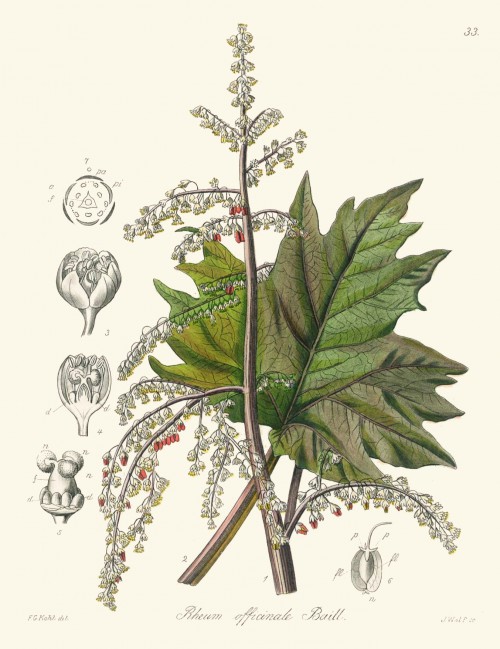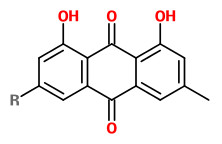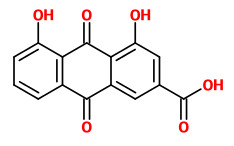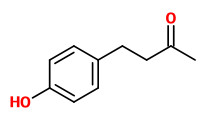Rheum officinale Baill. - Polygonaceae
药用大黄 yao yong da huang (chin.), Chinese rhubarb, Canton rhubarb, Shensi rhubarb, Südchinesischer Rhabarber, Kanton-Rhabarber
Large perennial herb, 1.5-2m tall, native to Southwest China, Southeast Tibet, Birma; stem stout, hollow; leaf blades orbicular, 30-50 cm in diam., or longer than wide. http://www.efloras.org/florataxon.aspx?flora_id=2&taxon_id=200006743
The four major hydroxyanthraquinones from R.officinale are chrysophanol, emodin, physcion and aloe-emodin.
[Preparative isolation and purification of hydroxyanthraquinones from Rheum officinale Baill by high-speed counter-current chromatography using pH-modulated stepwise elution. Yang, F., Zhang, T., Tian, G., Cao, H., Liu, Q., Ito, Y., Journal of Chromatography A, Vol.858(1), 1999, 103-107]
„The inhibitory effects of five hydroxyanthraquinones (HAQs) from root and rhizoma of Rheum officinale Baill, a traditional Chinese medicinal (TCM) herb, on Staphylococcus aureus growth were investigated by calorimetry… IC50 of the five HAQs was 4 μg ml−1 for emodin, 3.5 μg ml−1 for rhein, 10 μg ml−1 for aloe-emodin, 1000 μg ml−1 for chrysophanol, 1600 μg ml−1 for physcion. The sequence of antimicrobial activity of the five HAQs: rhein > emodin > aloe-emodin > chrysophanol > physicion.“
[Calorimetric investigation of the effect of hydroxyanthraquinones in Rheum officinale Baill on Staphylococcus aureus growth. Yanwen, W., Wenyuan, G., Xiaohe, X., Yi, L., Thermochimica acta, Vol.429(2), 2005, 167-170]
„RK (raspberry ketone) from R. officinale inhibited melanogenesis through a post-transcriptional regulation of tyrosinase gene expression in cultured B16 melanoma cells. In addition, RK also inhibited melanogenesis of skin in both zebrafish and mice. Based on our findings reported here, RK would appear to have high potential for use in the cosmetics industry.“
[Evaluation of in vitro and in vivo depigmenting activity of raspberry ketone from Rheum officinale. Lin, V. C. H., Ding, H. Y., Kuo, S. Y., Chin, L. W., Wu, J. Y., Chang, T. S., International journal of molecular sciences, Vol.12(8), 2011, 4819-4835] http://www.mdpi.com/1422-0067/12/8/4819/htm
„… emodin may effectively delay the progression of airway inflammation and could be used as a therapy for patients with allergic airway inflammation.“
[Effects of an anthraquinone derivative from Rheum officinale Baill, emodin, on airway responses in a murine model of asthma. Chu, X., Wei, M., Yang, X., Cao, Q., Xie, X., Guan, M., Deng, X., Food and Chemical Toxicology, Vol.50(7), 2012, 2368-2375]
The dried rhizome of R.officinale, R.palmatum, and hybrids thereof, (Rhizoma Rhei, Radix rhei sinensis) is used for short-term treatment of obstipation. Chronic (ab)use may lead to potassium deficiency with possible reinforcement of the effect of cardiac glycosides and impairment of the action of antiarrhythmic drugs.
[Wolfgang Blaschek ed., Wichtl - Teedrogen und Phytopharmaka: Ein Handbuch für die Praxis, 2015, 550-553]

Kohl,F.G., Die officinellen Pflanzen der Pharmacopoea Germanica, t.33 (1891-1895)
http://plantgenera.org/species.php?id_species=874395



